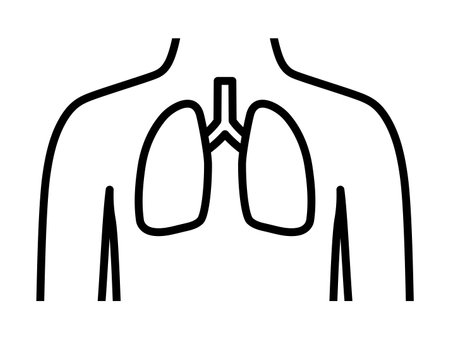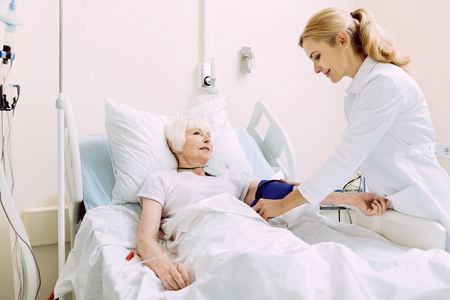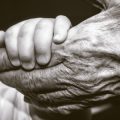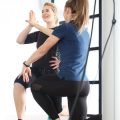Introduction to Stroke Rehabilitation in the UK
Stroke remains one of the leading causes of adult disability in the United Kingdom, with thousands of people experiencing life-changing effects every year. According to recent NHS statistics, nearly 100,000 individuals suffer a stroke annually across the country. The aftermath of a stroke often brings significant challenges related to mobility, making effective rehabilitation crucial for regaining independence and improving quality of life. British rehabilitation centres play an essential role in supporting stroke survivors, guided by NHS standards such as the National Clinical Guideline for Stroke and frameworks like the NICE guidelines. These emphasise timely assessment and tailored interventions to address mobility impairments. Mobility assessment forms a cornerstone of post-stroke care in the UK; it enables clinicians to identify individual needs, set realistic goals, and measure progress using validated tools such as the Modified Rankin Scale or Barthel Index. By focusing on mobility from the earliest stages of recovery, British rehabilitation teams help maximise each persons potential for movement, participation in daily activities, and emotional well-being. This compassionate, evidence-based approach ensures that care is not only clinically effective but also respectful of each person’s dignity, preferences, and aspirations.
2. Initial Mobility Assessment Post-Stroke
In British rehabilitation centres, the journey to restoring mobility after a stroke begins with a thorough initial assessment. This process is both clinical and compassionate, recognising that each person’s needs are unique. The first step involves determining the individuals baseline mobility, which guides the multidisciplinary team in creating a tailored rehabilitation plan.
Common Assessment Tools Used in the UK
Therapists across the UK employ a variety of standardised tools to assess post-stroke mobility. These assessments are designed to provide an objective picture of a patient’s current abilities, limitations, and potential for improvement. Below is a table outlining some of the most frequently used assessment tools:
| Assessment Tool | Description | Purpose |
|---|---|---|
| Berg Balance Scale (BBS) | Assesses static and dynamic balance through 14 tasks | Evaluates fall risk and balance performance |
| Timed Up and Go (TUG) Test | Measures time taken to stand up, walk 3 metres, turn, and sit down | Assesses basic functional mobility |
| Functional Ambulation Categories (FAC) | Categorises walking ability based on need for support | Determines level of independence in walking |
| 6-Minute Walk Test (6MWT) | Measures distance walked in six minutes on a flat surface | Assesses endurance and cardiovascular fitness |
| Rivermead Mobility Index (RMI) | Covers activities from turning in bed to running | Monitors progress across various mobility tasks |
How Therapists Determine Baseline Mobility
The assessment process begins soon after admission to a British rehabilitation centre. Physiotherapists conduct initial observations and interviews with both the individual and their family or carers. They consider factors such as pre-stroke activity levels, home environment, and personal goals. Standardised tests are administered alongside practical evaluations—for instance, watching how safely someone transfers from bed to chair or stands from sitting. This holistic approach ensures that the baseline assessment is not just about scoring numbers but understanding lived experience.
The Role of Multidisciplinary Teams
Mobility recovery after stroke is never a solo endeavour. In the UK, multidisciplinary teams—comprising physiotherapists, occupational therapists, speech and language therapists, nurses, and sometimes psychologists—work collaboratively to interpret assessment results and plan care. Regular meetings are held to discuss each individual’s progress, challenges, and priorities. Family members are often included in these discussions, ensuring that everyone involved feels supported and informed.
A Gentle Reminder: Every Step Counts
The initial mobility assessment is more than a checklist; it is a compassionate starting point for rehabilitation. By using evidence-based tools within a supportive team structure, British rehabilitation centres aim to honour each person’s dignity and potential on their path toward greater independence.

3. Personalised Rehabilitation Planning
In British rehabilitation centres, a cornerstone of effective stroke recovery is the commitment to personalised rehabilitation planning. This approach emphasises the importance of understanding each person’s unique story, values, and aspirations as they embark on their journey towards regaining mobility. Rather than following a one-size-fits-all method, therapists in the UK work closely with patients and their families to design mobility plans that truly reflect individual needs, preferences, and long-term goals.
This patient-centred philosophy is deeply rooted in British healthcare culture, where respecting autonomy and dignity is paramount. Initial assessments often involve meaningful conversations about what matters most to the individual—whether it’s returning to gardening, walking to the local shop independently, or simply being able to stand unaided for a cherished family occasion. By weaving these personal ambitions into rehabilitation targets, clinicians help foster motivation and resilience throughout the recovery process.
Moreover, tailored plans are regularly reviewed and adapted based on progress and changing circumstances. Multidisciplinary teams—comprising physiotherapists, occupational therapists, nurses, and social workers—collaborate to ensure that every aspect of support remains relevant and responsive. This holistic approach not only maximises physical outcomes but also nurtures emotional well-being and confidence, which are just as vital for successful community reintegration after stroke.
4. Effective Interventions to Enhance Mobility
Mobility recovery after a stroke is a central focus within British rehabilitation centres, and a range of evidence-based interventions are thoughtfully tailored to each individuals needs. In the UK, these approaches not only reflect clinical best practice but also resonate with the values of person-centred care and community inclusion. Below is an overview of the most effective strategies currently utilised in British settings:
Physiotherapy: The Foundation of Movement Recovery
Physiotherapy is often the cornerstone of post-stroke mobility enhancement. British physiotherapists work closely with stroke survivors to develop bespoke exercise programmes that address muscle strength, balance, coordination, and walking ability. Sessions may take place both within the centre and at home, ensuring continuity and progression. Techniques such as gait training, task-specific practice, and functional electrical stimulation are commonly used, aiming to restore confidence in daily movement.
Occupational Therapy: Regaining Independence
Occupational therapists in the UK play a vital role in supporting individuals to reclaim independence through purposeful activity. They assess practical challenges faced by stroke survivors—such as navigating stairs or preparing meals—and design interventions to overcome these barriers. Adaptive equipment and environmental modifications are often introduced to ensure safety and promote autonomy. Collaboration between occupational therapists and physiotherapists is highly valued in British practice, fostering holistic mobility improvement.
Group Activities: Fostering Social Engagement and Motivation
Many British centres offer group-based mobility sessions, recognising the importance of social interaction in rehabilitation. Group activities—ranging from seated exercise classes to walking clubs—encourage peer support, shared learning, and increased motivation. Participation in these groups has been shown to improve adherence to rehabilitation plans and foster a sense of belonging during recovery.
In-Centre and Community-Based Support
| Intervention Type | In-Centre Approach | Community-Based Approach |
|---|---|---|
| Physiotherapy | Individual sessions, group exercises, use of specialised equipment | Home visits, tele-rehabilitation, community walking schemes |
| Occupational Therapy | Functional skills training within the centre environment | Home adaptation advice, outreach support for daily tasks |
| Group Activities | Circuit classes, mobility games, peer-led sessions | Local support groups, outdoor activities in parks |
A Holistic and Culturally Sensitive Approach
The integration of evidence-based therapies with community resources reflects a uniquely British approach—one that values not just physical recovery but also emotional wellbeing and social participation. By offering flexible pathways across different settings, British rehabilitation centres help stroke survivors rebuild their lives with dignity and hope.
5. Supporting Long-Term Mobility at Home and in the Community
Transitioning from a rehabilitation centre back to everyday life is both an exciting and challenging phase for stroke survivors and their families. Sustaining mobility gains achieved during inpatient care requires careful planning, ongoing support, and a collaborative approach that draws on the strengths of both formal services and informal networks.
Strategies for Ongoing Support After Discharge
Upon discharge, British rehabilitation centres typically work closely with patients to develop personalised home exercise programmes designed to maintain and enhance mobility. These plans often include tailored physiotherapy routines, advice on safe movement around the home, and guidance on pacing daily activities to manage fatigue. Regular follow-up appointments—either in person or virtually—help track progress and address emerging needs, ensuring that improvements made in the centre are not lost over time.
Coordination with Community Services
A key component of sustained mobility support involves seamless coordination with community-based services. Local NHS trusts provide access to outpatient physiotherapy, occupational therapy, and community rehabilitation teams who continue to monitor recovery and adapt interventions as required. Charities such as the Stroke Association offer invaluable resources, including support groups, information sessions, and mobility workshops tailored for local communities across the UK. GPs play a central role in overseeing ongoing care, making referrals as needed and ensuring continuity between healthcare settings.
Carer Involvement and Empowerment
Family members and carers are often the unsung heroes of long-term stroke recovery. British rehabilitation teams emphasise carer education—teaching safe techniques for assisting with transfers, encouraging independence where possible, and recognising signs of potential setbacks. Many centres organise workshops for carers focusing on practical skills, emotional resilience, and navigating available resources. Open communication between professionals and carers fosters a supportive environment where everyone feels confident in managing daily challenges together.
Utilising NHS and Local Authority Resources
The NHS provides a range of equipment such as walking aids, grab rails, and home adaptations through local authorities’ social care departments. Occupational therapists can arrange home assessments to identify environmental barriers and recommend modifications that promote safety and confidence. Some councils offer grants or loan schemes for necessary adaptations, ensuring that financial constraints do not hinder progress. Additionally, many communities run accessible transport schemes and inclusive leisure activities, helping survivors remain active participants in society.
A Gentle Reminder
Sustained recovery after stroke is rarely a linear journey; there will be ups and downs along the way. With compassionate support from rehabilitation professionals, carers, and community resources across Britain, survivors can continue building confidence in their mobility—at home, outdoors, and wherever life may lead them.
6. Measuring Progress and Adjusting Care Plans
Monitoring a stroke survivor’s journey towards improved mobility is a cornerstone of rehabilitation in British centres. Regular assessment not only helps to celebrate progress but also ensures that care plans are responsive to each individual’s changing needs. In the UK, professionals rely on established outcome measures and thoughtful observation to tailor support throughout recovery.
Approaches to Monitoring Improvements
Frequent and systematic evaluation forms the backbone of effective rehabilitation. British therapists commonly use standardised tools such as the Barthel Index, which assesses daily living activities, and the Berg Balance Scale, which focuses on balance—a key aspect of safe mobility. These measures provide a clear baseline at the start of rehabilitation and enable practitioners to track subtle improvements or emerging challenges over time.
Commonly Used Outcome Measures
Outcome measures like the Tinetti Performance Oriented Mobility Assessment (POMA) and the Timed Up and Go (TUG) Test are widely employed across UK settings. These assessments offer objective insights into gait, balance, and overall functional mobility. For more holistic understanding, therapists might include patient-reported outcomes such as the Stroke Impact Scale, capturing the person’s own perspective on their progress and wellbeing.
Adapting Strategies Based on Results
As results are gathered, multidisciplinary teams review them collaboratively—often during regular meetings—to adapt care plans. If a patient shows steady improvement, exercises may be advanced or increased in complexity. Conversely, if progress stalls or regresses, underlying causes such as fatigue, mood changes, or secondary complications are explored with gentle attention. This dynamic approach is rooted in the British ethos of personalised care and patient-centred planning.
The Importance of Communication
Throughout this process, open dialogue between professionals, patients, and families is vital. Sharing assessment results in an accessible way fosters trust and encourages motivation. It’s not uncommon for British rehabilitation teams to invite family members to observe sessions or participate in goal-setting discussions, ensuring everyone feels included on the journey towards greater independence.
By systematically measuring progress and remaining flexible with strategies, British rehabilitation centres provide compassionate guidance while empowering stroke survivors to reclaim mobility at their own pace.
7. Overcoming Barriers to Mobility Improvement
Recovering mobility after a stroke is often accompanied by a unique set of challenges, both physical and emotional, that can feel overwhelming for survivors and their loved ones. In British rehabilitation centres, these barriers are met with empathy, expertise, and community-focused support.
Understanding Common Challenges
Many stroke survivors in the UK experience weakness, fatigue, difficulties with balance, and sometimes fear of falling. Emotional hurdles—such as frustration, anxiety, or loss of confidence—are just as real. Families may feel uncertain about how best to help or worry about the future.
A Compassionate Approach
Rehabilitation teams across Britain recognise that each person’s journey is different. Therapists gently encourage progress at a comfortable pace, always considering individual needs and wishes. Support groups and peer mentors are frequently available, providing a safe space to share experiences and learn from others facing similar challenges.
Accessible Resources and Encouragement
The NHS and charitable organisations such as the Stroke Association offer practical resources: home adaptations, mobility aids like walking frames or sticks, and tailored exercise programmes. Information is provided in clear, accessible language to empower families as partners in care. Rehabilitation staff celebrate small victories—every step regained is acknowledged as meaningful progress.
Family Involvement and Ongoing Support
Families are encouraged to participate in therapy sessions whenever possible. This not only builds confidence but also helps loved ones understand how best to provide encouragement at home. British rehabilitation centres often host workshops or provide written guidance on supporting mobility safely and positively.
Cultivating Hope Together
Above all, British rehabilitation services aim to nurture hope. With gentle guidance, encouragement, and access to supportive resources, stroke survivors and their families find strength in community and perseverance. Even when progress feels slow, the collective belief in improvement remains steadfast—ensuring no one faces the journey alone.


